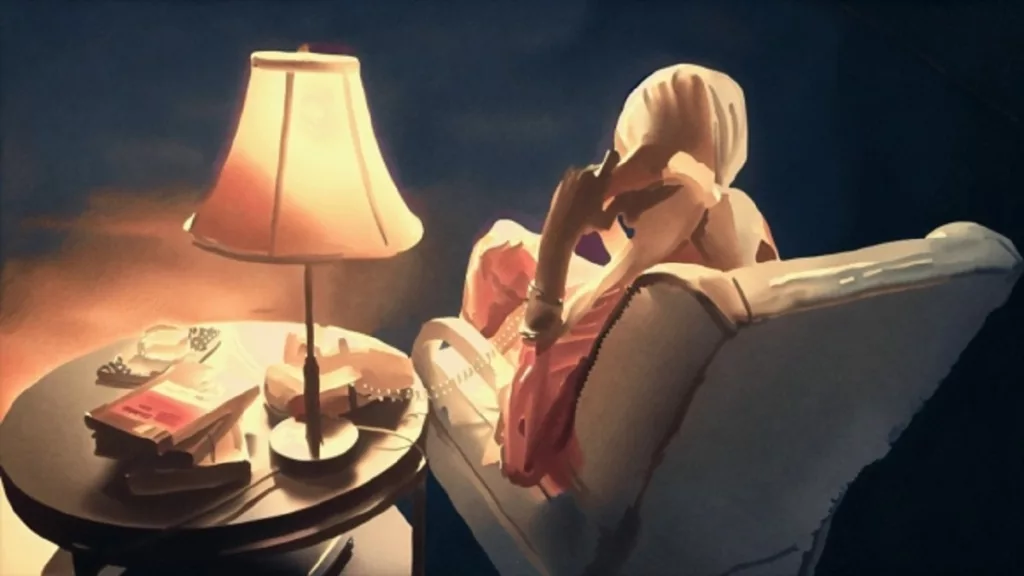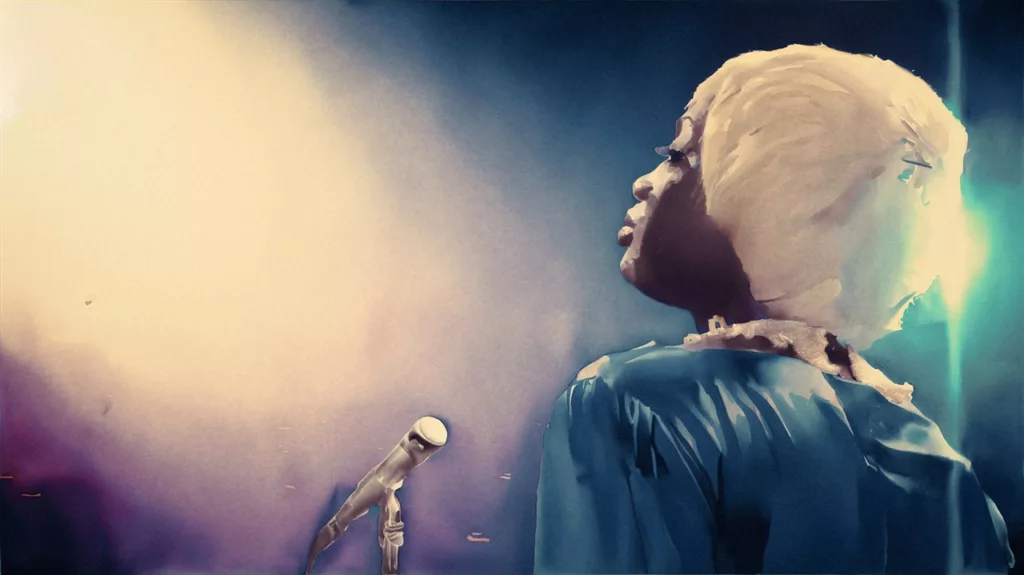Jackie Shane was a musical trailblazer. Born in 1940s Nashville, she rose to fame in the Toronto music scene of the 1960s with her distinctive soulful voice and dynamic stage presence. However, just as her star seemed destined to shine even brighter, she vanished from the public eye in 1971. While rumors swirled about what may have become of her, the truth of those missing years remained a mystery.
All of that changed with the 2019 release of the documentary Any Other Way: The Jackie Shane Story. Directed by Michael Mabbott and Lucah Rosenberg-Lee, the film sets out to rediscover the story of this lost icon and shine new light on both her musical brilliance and pioneering journey. As one of soul and R&B’s first black transgender performers, Jackie broke barriers just by living her authentic self. The film brings her taletback to the forefront through unearthed interviews and pictures alongside animated scenes depicting parts of her journey prior to the widespread use of recordings and film. Through this compelling film, Jackie’s legacy is ensured a well-deserved place in musical history for generations to come.
Breaking Boundaries: Bringing Jackie Shane’s Story to Life Through Animation
This documentary about renowned soul singer Jackie Shane faces a unique challenge: little video exists of her acclaimed performances. To help audiences connect with the trailblazing musician, the film’s creators employed innovative animation techniques to bring Shane’s memories to life.
Directors Michael Mabbott and Lucah Rosenberg Lee knew archival footage and interviews alone wouldn’t capture Shane’s magnetic stage presence and eventful journey. So they turned to animators Luca Tarantini and Jared Raab, tasking them with illustrating key periods where photos were scarce. The duo rose to the challenge with their rotoscope animation style.
Using live-action footage of actress Makayla Walker as a base, Tarantini and Raab’s process treated each frame like a painting. Poring over the minutiae of tones and brushstrokes, they crafted visually striking scenes that feel drawn from the soul. Live performances pulse with energy beneath flowing color washes, while intimate phone calls glow with streaks of nostalgic hues.
By prioritizing impression and movement over rigid realism, the animations breathe vibrancy into glimpses of Shane’s past. Her childhood bubbles with youthful innocence, Canadian club nights sparkle with liberation, and later solitude washes over in waves of quiet longing. At every turn, the animated sequences resonate with an emotive expression barely found elsewhere.
Through dedicated experimentation blending filmed footage and AI tools, Tarantini and Raab unlocked new artistic frontiers. Their pioneering work brings audiences closer to the magic and mystery of Jackie Shane, a true musical icon deserving of rediscovery. In reanimating treasured memories, the film breathes new life into an important story too long left in the shadows.
Finding Freedom in Montreal
Jackie Shane experienced a challenging beginning living in Nashville. Born in 1940 to a teenage mother unable to care for her, she was raised by an extended family yet still endured taunts from peers for seemingly feminine traits. Despite facing discrimination, Shane’s prodigious musical talent emerged early on. She became a drummer in her church choir and later backed stars like Little Richard after moving to Nashville’s vibrant black music scene.
However, the South’s systemic racism meant Shane could never truly thrive there. One shining light was her friendship with Little Richard, who recognized her gift and often socialized together. But his fame also made him a prime target for hatred. Joe Tex, another colleague, wisely counseled Shane that, as a uniquely stylish black artist, “you’ll never become who you could become,” enduring the South’s cruelty.
Taking Tex’s warning to heart, Shane left Nashville with a traveling circus. While assisting their musical tent performances, she discovered Montreal offered a far more tolerant atmosphere after the circus visited Canada. Intrigued by the city’s bustling nightlife despite mob influence, Shane decided to stay. She connected with trumpeter Frank Motley’s band, becoming their lead singer.
Motley and Shane’s dynamic performances quickly made them stars across Montreal. Their rising popularity led to long tours across Canada and into America’s cities, opening for icons like Etta James. Etha was so stunned by Shane after one show that she told the crowd, “If I’d known what Jackie does, I would’ve gone on first!” In Montreal, and later in Toronto, which she considered her true home, Shane at last felt free to fully embrace her magnetic stage presence and vocal talents, delighting audiences with her incomparable shows. After years of facing prejudice, Shane’s trailblazing artistry in Montreal began transforming her dreams of stardom into reality.
Finding Success, Then Fading Away
During the 1960s, Jackie Shane found enormous success touring Canada and the United States with trumpeter Frank Motley’s band. They became one of the hottest acts around, drawing packed crowds wherever they performed. Toronto especially embraced Shane, where audiences flocked to see her shows at the iconic Sapphire Club. Word of Shane’s magnetic performances spread far and wide.
For a time, the Sapphire was Shane’s beloved home base. Fans regularly lined up around the block, hoping to get in to experience her unique brand of soulful singing and flashy stage presence. It was there that Shane recorded a now-historic live album in 1967. Capturing her live prowess, the record stands as the lone full-length release of her material during a career tragically cut short.
Yet sometime in 1971, Jackie Shane abruptly disappeared from public view. Speculation swirled about what led to her abrupt exit from music. Some assumed the worst, believing false rumors about her passing. Others guessed she’d faced challenges too immense to remain in the spotlight. Without any clear answers, Shane’s departure became shrouded in mystery.
Decades went by without resolution, as very little was known about her later decades. Only years later did the truth begin to emerge: she had simply wished to step back and live freely outside of fame’s constraints. Still, uncertainties remained about Shane’s experience in those missing post-1971 chapters of her life. What drove her longing to leave behind all she’d built? The motivations behind her fade to black remained lamentably unclear.
Sadly, Shane took many untold stories to the grave when she died in 2019. While questions linger, her legacy as a musical pioneer who enthralled Toronto so dearly lives on.
Legacy of a Pioneer
It’s amazing to think that such a talent could go undiscovered for so long. But in the 2010s, Jackie Shane was finally rediscovered through the release of a compilation celebrating her complete works. This collection, titled “Any Other Way,” brought her soulful vocals to a new generation and was fittingly nominated for a Grammy. Her long-overdue recognition showed that great art continues to find audiences, even years later.
Shane’s significance stretches far beyond her impressive musical skills. As one of the earliest black transgender artists, she blazed a trail at a time when simply living authentically was a bold act of defiance. By incorporating dazzling outfits and makeup into her dynamic stage presence, Shane allowed her full self to shine through. She inspired countless others to embrace their identities without fear of judgment.
Though prejudice forced Shane to endure much hardship, her silence and talents left a mark. She proved that talent and character transcend superficial labels or boundaries. While Shane’s early struggles were sadly common for transgender pioneers, her mainstream success showed society’s attitudes, even then, could evolve with exposure to new ideas. She helped with that evolution in small yet important ways.
Tragically, Shane’s later years were lonely ones. But her music continues to connect people, and her memory lives on in all she has influenced. Though brief, her time in the spotlight made her an iconic figure, especially for transgender and soul music fans worldwide. She left proof that authentic self-expression and artistic excellence can triumph over adversity. That is a legacy truly worthy of remembrance and recognition. Shane remains dear to many as a symbol of hope who reminds us to keep progressing towards a more just and accepting world.
Inheriting a Story and a Life
You can imagine the surprise of Jackie Shane’s nieces when she settles her estate. Neither knew this musical icon had been living quietly down the street for decades. But among the belongings in her home were clues to the woman they never met—most revealingly, an unpublished autobiography.
The glimpses from her writing are haunting. “I was born, but never lived,” conveys a lifetime of fighting to simply exist as her authentic self. Her words give vocabulary to formless struggles, giving shape to injustices faced with courage. Throughout hardships, she remained devoted to her art, finding harmony in musical expression.
Beyond charts and statistics, autobiographies put flesh on history by communicating inner lives in personal terms. They connect large-scale issues to individual humanity. Readers begin to see beyond headlines through another’s eyes, engaging empathy.
For Jackie’s family, this discovery redefined their understanding. A multidimensional person emerged where ignorance once stood. Though her singing brought joy to thousands, loneliness darkened her own life’s end. Her story, shared broadly through this film, ensures her legacy resonates far beyond one family’s confined knowledge.
By animating interviews and publishing this private work, directors gift audiences more than facts—we meet the dreaming, feeling woman behind pages and photos. Her perseverance in pursuit of authenticity continues to inspire many to live freely despite society’s constraints. This biographical insight breathes profound life into an iconic figure, restoring her complete identity and magnificent humanity for all to appreciate.
The Soulful Storytelling of Any Other Way
This film brings to life the remarkable journey of a forgotten musical great. Directors Mabbott and Rosenberg-Lee have crafted a tribute to Jackie Shane that does justice to her incredible talents. Despite scant archived footage of her performances, they utilize animation, interviews, and Shane’s own words to restore this pioneer to her rightful place in history.
The style does more than illustrate; it energizes. Rotoscoped sequences capture the vivacious spirit that lit up stages. Visually lush while remaining grounded in reality, this creative choice breathes life into someone denied the chance to fully be herself. Shane’s joy, pain, and perseverance radiate from the screen, giving the audience insight not found elsewhere.
We learn not just about professional highs and lows but also gain a window into the personal toll of societal barriers. Any Other Way honors Shane’s legacy by revitalizing her story. In doing so, it serves an important role by highlighting those from marginalized groups whose contributions risked being forgotten. It shines a light on the triumphs and trials of living authentically in a time of great prejudice.
This soulful documentary is a testament to both an iconic figure and filmmaking’s power to keep history alive. For those drawn to 60s culture, LGBTQ+ themes, or simply fantastic music, Any Other Way delivers. It brings a missing piece of our collective narrative to an audience it was always meant to reach.
The Review
Any Other Way: The Jackie Shane Story
Any Other Way tells a story that needed to be shared. Directed with creativity and care, it honors Jackie Shane by illuminating an incredible yet underrecognized career and life. Both educational and emotionally impactful, the film succeeds in celebrating a pioneering spirit who helped pave the way for others. Through insightful interviews, archive finds, and beautifully animated sequences, directors Mabbott and Rosenberg-Lee breathe vibrant life into the multifaceted soul singer.
PROS
- Talented storytelling utilizes animation and archival material to illuminate Jackie Shane's life and career
- An educational look at an important but obscured figure in music and LGBTQ+ history
- Emotionally impactful profile of persevering against adversity to succeed as an artist
- Creative execution brings energy and empathy to the screen
CONS
- Reliance on interviews leaves some gaps from the lack of firsthand accounts from Shane
- The stylized animation approach may not appeal to some viewers seeking strictly factual biopics
- Focuses predominantly on professional highlights, leaving personal life fairly private






















































Discussion about this post